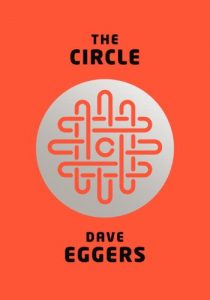Review by Dan Geddes
See also:
A Prayer for Owen Meany,
A Son of the Circus,
The Fourth Hand and
an imaginary review of Irving’s The Third Leg
A Widow For One Year
by John Irving
John Irving’s A Widow for One Year chronicles the history of the Cole family over a period of 37 years. The Coles are a family of writers: Ted Cole, the father, is a writer of very successful children’s books; his daughter, Ruth, becomes a popular novelist; Marion, the mother, becomes a mystery writer years after divorcing Ted.
We are told that the Coles’ lives are shattered when their two teenage boys are killed in a car accident (as in Irving’s World According To Garp). Ted and Marion conceive Ruth soon after, but it is clear by then that the marriage is already over. In the summer of 1958, when Ruth is four, Ted decides he wants to end the marriage, so he hires Eddie O’Hare as his writer’s assistant. Ted chose Eddie because of the sixteen-year-old’s resemblance to the dead boys. Ted counted on Marion wanting sex with Eddie because of the resemblance, and that Eddie, for his part, will be tempted by Marion, whom at age 39 is described by Irving as possibly “one of the most beautiful women alive” (30)
The novel opens with Ruth’s discovery of Eddie having sex with Marion, one of sixty times that summer that they performed the act. (Years later, Eddie writes a novel about this summer called Sixty Times.) Marion is angered by Ted’s duplicity, and leaves him one day by surprise, taking all but one of the photographs of their dead boys. The photographs of the handsome boys had preserved the memories of a once happy family. Behind each of the photographs is a story, and so when Ruth leaves Ted and Ruth forever, she also steals the primal images of the Cole family mythology.
A Widow for One Year is divided into three parts, and the first part, “Summer 1958,” is one of Irving’s strongest works. Ted and Marion Cole are interesting characters—affluent, good-looking, creative, outspoken, liberal, agnostic, and athletic. Ted is also a successful womanizer, which generates the hilarious chapter “Dumping Mrs. Vaughn” one of Irving’s best, rivaling even Owen Meany’s Christmas pageant for slapstick laughs.
Parts II and III take place in 1990 and 1995 respectively. Ruth is now a successful novelist in her mid 30s. Ted is an ageless 76, and Eddie, at 48, is himself an obscure author, still pining for Marion and writing mainly autobiographical novels about sex with older women. Marion has remained out of contact with her family (and with Eddie) because of her inconsolable grief over the death of her sons.
While Ted, Marion, and Eddie are equally important in “Summer 1958”, the rest of the novel centers on Ruth Cole. Both Ruth and her literary career are interesting (Irving even includes the full text of one of her stories and of Marion’s), but Ruth’s supporting cast lacks fire. Allan, Ruth’s publisher and boyfriend, and Hannah, her sexpot best friend, are forgettable, and do not help sustain Parts II and III. Ted and Eddie are both shadows of their former characters later in the work. Irving distinguishes their voices, but some of the characters are scarcely worth knowing.
Irving provides a good read, at least in part because he has never shied away from using sensational events. The Marion – Eddie affair (so casually accepted by all involved) ignites the early part of the narrative, and dangles the question before the reader: when will Marion return to Ruth? While we wait nearly forty years for that question to be answered, we are instead offered subplots such as Ruth and Ted’s squash rivalry, Eddie’s brief infatuation with the adult Ruth, and Ruth’s witnessing the murder of an Amsterdam prostitute while conducting research for a novel. These later passages draw on the strength of first the part.
The Amsterdam sections seem out of place. We don’t find it necessary to be told the name of every street Ruth walks on in the red light district; four or five street names should be enough. Irving’s Amsterdam research still shows a little through the seams. I also find it unlikely that the one and only time Ruth watches a prostitute, she witnesses her murder. But Irving’s work is filled with such incidents; it is part of what makes his work consistently lurid and interesting.
#
It is difficult to decide whether the old charge of sensationalism against Irving’s work is justified here. Sex and violence are staples of literature, but there remains something cartoonishly graphic and premeditated about the violence in Irving’s work. The hilarious early chapter “Dumping Mrs Vaughn” plays like a cartoon with the smelly Mrs Vaughn hunting down Ted with her car, while Eduardo her gardener looks on as a hapless victim. The death of the boys, Ted, and Rooie (the Amsterdam prostitute), as well as Ruth’s rape all seem calculated to grab the reader’s attention. While this is the novelist’s task, reading is often more satisfying when situations unfold from the characters actions instead of the author’s wish to entertain. Irving himself has Ruth state this during one of her interviews “I start with the characters”. The element of the fantastic in Irving’s writings may also be seen in Ted Cole’s role as a children’s writer cum bad novelist. If the literary Cole family represents facets of Irving as a writer, then Ted, who is more of a sketch artist than a writer, represents Irving’s cartoonlishly graphic side.
The charge of sensationalism is more convincing when unusual situations seem more like the author’s artifice than the result of a character’s action. Ruth Cole is raped. A few weeks later she witnesses the murder of a prostitute, but she returns home unchanged by the experience. Soon she marries Allan, her publisher and a much older man, and gets on with her life. Ruth always gets on with her life. Ted Cole’s suicide is similarly surprising and relatively unexplained. We sense that he killed himself more because Ruth finally beats him at squash, than because his current squash partner rapes Ruth. But Ted Cole’s suicide is unconvincing.
We are also confronted with many other unconvincing character actions. Marion leaves Ruth as a four year old but it seems Irving wants us to excuse Marion’s abandonment of Ruth because of her grief and her beauty. Marion slips away for thirty-seven years to reinsert herself into their lives only at the very end of the book. In the meantime, Eddie doesn’t look for her for thirty years. If Eddie’s lovemaking soothed her grief, and she loved him, why would Marion and Eddie stay apart for so long? Eddie’s move to Ted Cole’s Long Island community as a young man also feels like a creaky coincidence in Irving’s plot machinery.
While he is chronicling a family of affluent writers (as he did in Garp), we also sense that Irving is exploring his own writing career and critical reception. Irving has been one of the most popular of all American writers since Garp (1978), though his critical reception has been uneven. Ruth Cole’s career follows a similar trajectory (even her age and the publication of her early novels approximate Irving’s) and deals with some of the same themes—abortion, motherhood, and prostitution—as Irving’s.
The Coles reminded me of J.D. Salinger’s Glass family, where everyone was a writer or gifted in some other way and much sharp, funny, sophisticated dialogue was exchanged (rendered in the author’s precious italicization)., (though they are all haunted by someone’s death (Seymour’s suicide is the great mystery of the Glass stories and we are even told that Walt Glass, an infrequently mentioned character, dies in a freak explosion.) I don’t understand this.) Where Salinger only presents us with the Glasses rambling letters and a few lines of Seymour’s supposedly indispensable poetry, Irving provides a short story by both Ruth and Marion Cole, as well as a few of Ted’s children’s stories.
A Widow for One Year addresses the issue of the autobiographical nature of fiction. Irving tries to explain to us, through Ruth, the difference between fiction that was remembered by the writer (as the hapless Eddie writes) versus that which was imagined (Ruth’s method, and, it is implied, Irving’s own). Irving clearly does imagine his zany stories and episodes, but they are also well larded with recognizable locales of Irving’s life and patterns from his fiction.[1] But Irving does not want to be reduced by the charge that he is just dredging up autobiography—that’s the position of the boisterous Hannah Grant character about Ruth’s work. Ruth spends a long time imagining her characters before writing, as Irving has claimed to do.
Ruth is almost without fault as a character or a writer. Her fans adore her, and critics find her work worthy of serious criticism. She marries her publisher, and later her biggest fan (who is described as a great reader). She is beautiful, funny, and athletic, and we are clearly supposed to be swayed by her emphatic beliefs about the writing process.
#
Regardless of these criticisms, Irving’s work will endure for at least another generation, if not for a much longer time. His wit and imagination make us forgive the flaws. Although his subject matter remains Fate, or the bizarre, Irving is in command of his craft, and writes humorous, clearly written stories with outspoken characters.
14 August 2001
[1] Widow‘s footlessness theme (the dead Cole boys in the car, the important photo of their feet that Ruth cuts her finger on) recalls the armlessness of Owen Meany, and a whole motif of dismemberment throughout Irving’s fiction; sports and sporting equipment are again associated with violence, this time it is Ted Cole’s squash rackets, used both by Ruth in beating her attacker after he rapes her, and by Ted to hold down the gas petal of his Volvo so he can breathe in the exhaust fumes; in A Son of the Circus it was Vinod’s racquet handles; Owen Meany strongly equates sports and violence, and Garp is shot in his wrestling room; the dead Cole boys recall Duncan and Walt’s car accident in Garp; Exeter Academy, etc.









Be First to Comment